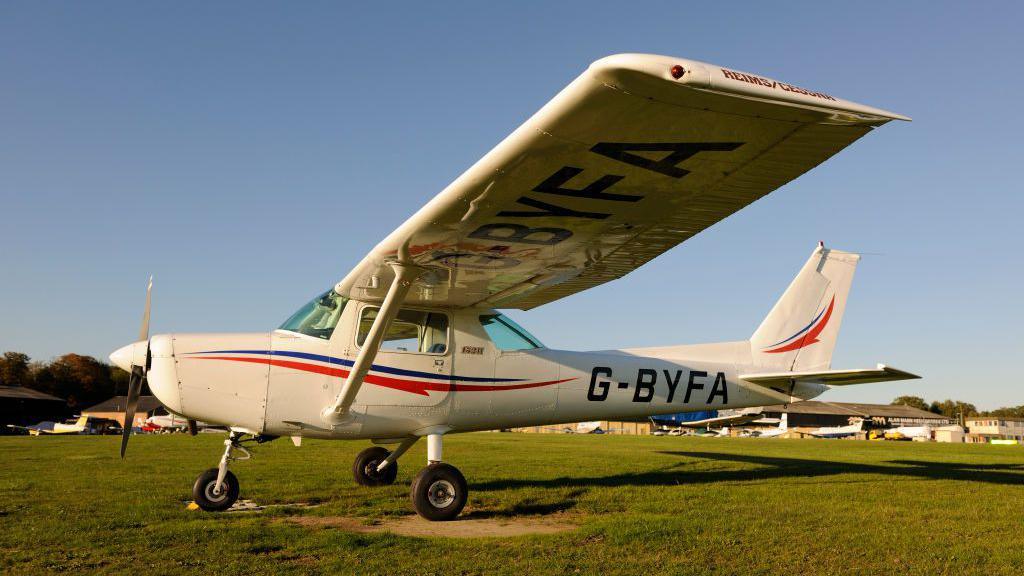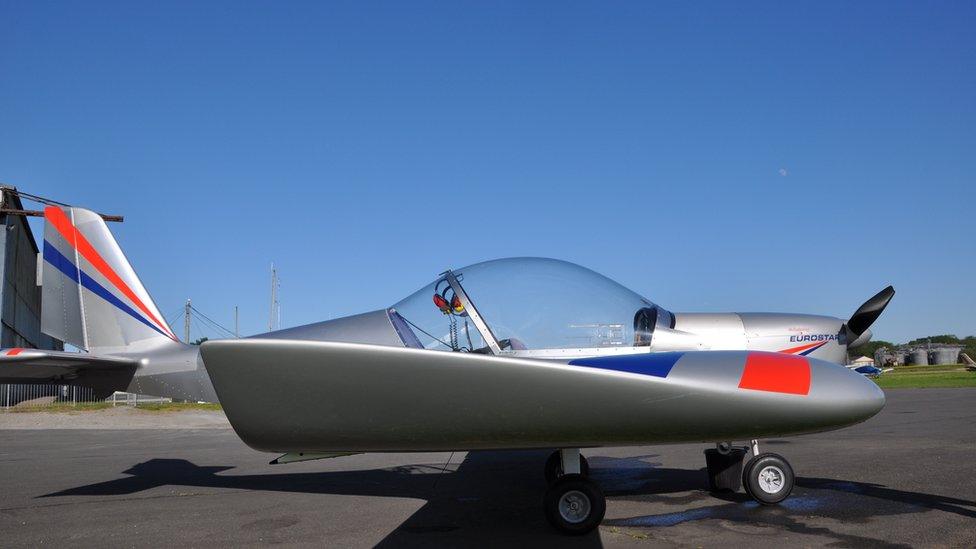Pilots in near-miss due to 'ineffective equipment'

The near-miss involved a Cessna 152, like the one pictured
- Published
Two light aircraft came close to crashing as a result of "ineffective" equipment and a lack of "situational awareness", an investigation ruled.
The incident on 4 May, near Peterborough, involved a Cessna 152 and a C42 plane.
The pilot of the first aircraft noticed another plane heading into its airspace before turning to avoid it.
The UK Airprox Board, external assessed the risk of collision as Category B, which is the second highest possible risk.
The second aircraft was carrying a student flyer, who was practising handling and steep turns before descending towards the airfield.
According to the pilot, they had not seen the incoming plane until it was "almost right in front of them".
The incident "all happened very quickly", they added, insisting they had "been looking out to the best of their ability".
The pilot in the first aircraft told investigators the other plane "seemed very close and had been close enough to read its registration".
Upon noticing the plane, they made a turn to the right to increase separation before carrying on so the other aircraft would pass behind them.
Investigators said both pilots, who took off from Conington Airfield, "shared an equal responsibility" for collision avoidance, but the pilot of the second aircraft should ideally have given way to the first.
They determined the first aircraft had not been able to detect the second due its transponder being off.
The pilot of the second aircraft was unable to detect the first plane due to a lack of electronic equipment.
Get in touch
Do you have a story suggestion for Peterborough?
Follow Peterborough news on BBC Sounds, Facebook, external, Instagram, external and X, external.
Related topics
- Published28 August 2016
